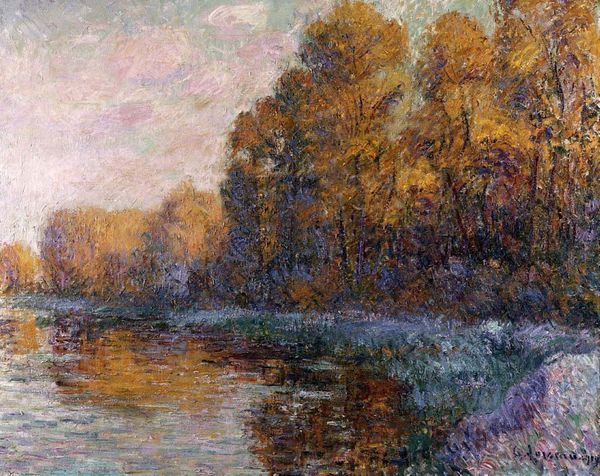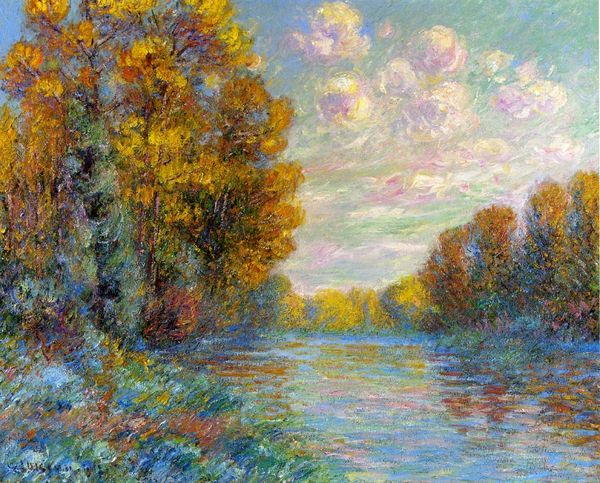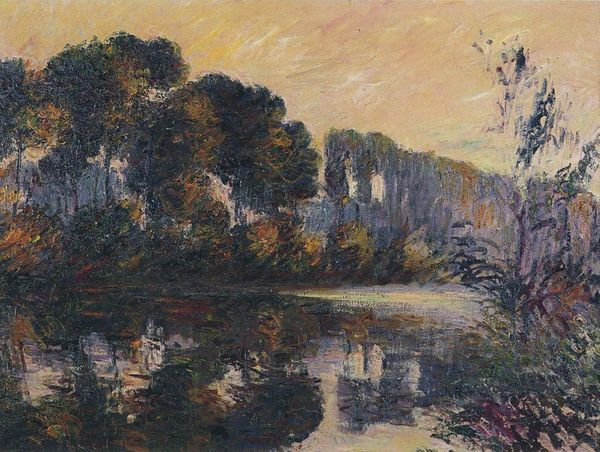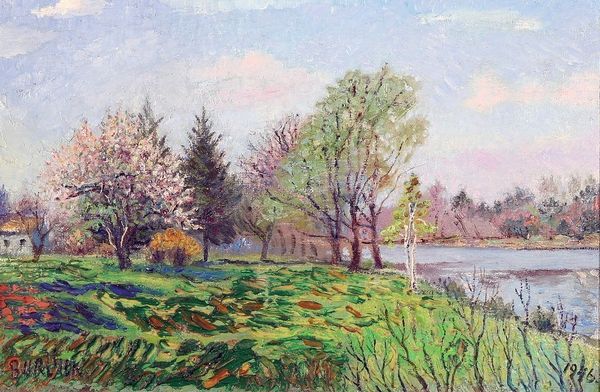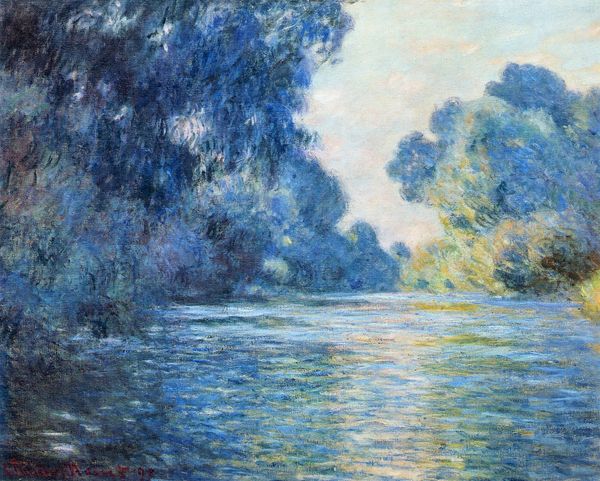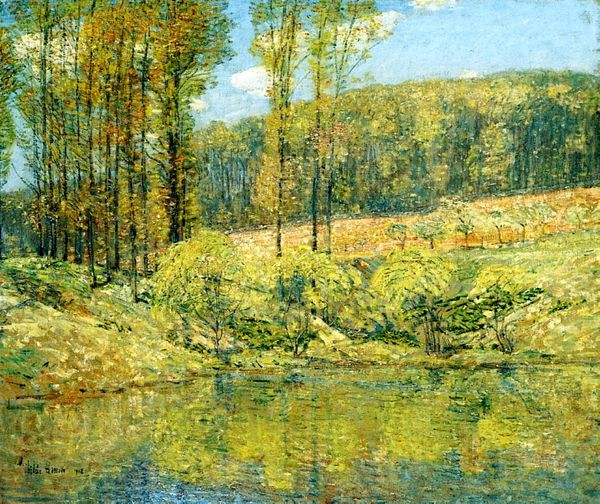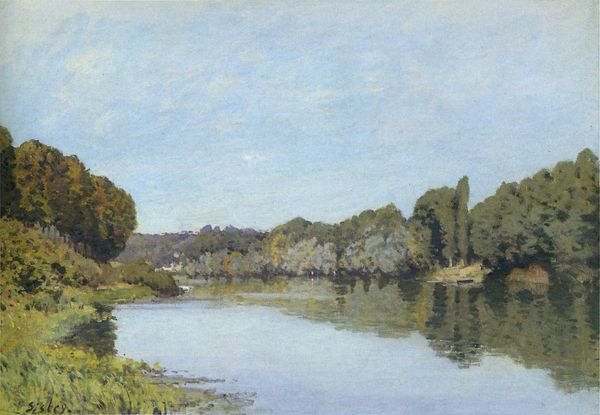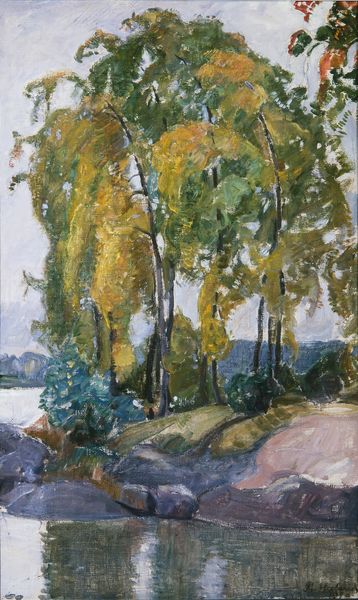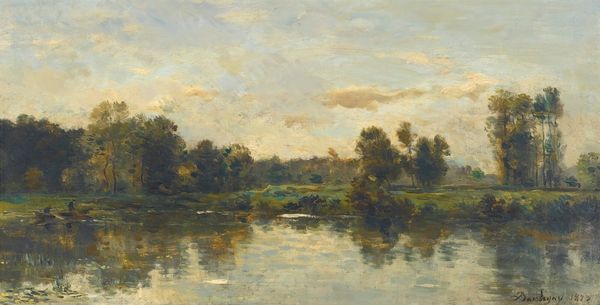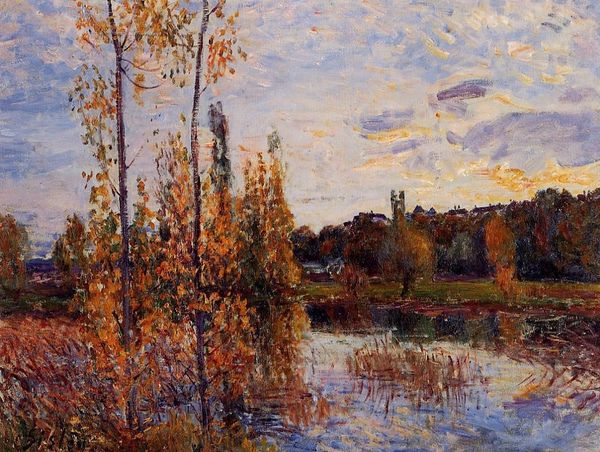
Copyright: Sergiy Grigoriev,Fair Use
Curator: Looking at this oil painting titled "Autumn," created by Sergiy Grigoriev in 1985, one can observe his post-impressionistic rendering of the landscape. The reflection of trees shimmers on the river’s surface in the foreground. What do you make of it? Editor: The river gives me instant serenity. It feels like I'm spying on a really beautiful secret—those lazy cows, that almost theatrical cluster of trees...it’s intimate. It’s as if the air smells clean and cool. Curator: Right. It seems to embody this complex relationship between the individual and the pastoral idyll. The use of the "Plein-Air" style reminds us to critically examine what social relations make access to that idyll possible, for whom and at what cost. Editor: I think that the application of paint really sings! Look at how freely Grigoriev applied the paint! It’s bold and honest, full of light, almost optimistic. You know, I feel like taking off my shoes and wading in, history and theory be damned! Curator: Well, that honesty aligns with Grigoriev’s social realism training, so you are not too far off base. These works often portray an idealized Soviet experience with direct representation. The brushstrokes and composition reflect a move towards this vision. The landscape can thus become a projection of a nation’s dreams and expectations. Editor: Huh. All that weight...It still whispers peace to me. Maybe I can hold both ideas at once? Idealized dreams ARE dreams nonetheless. Curator: Precisely. Art asks us to consider and reconcile multiple perspectives, even when those perspectives seem to contradict one another. Editor: Yes, this has shifted the image a bit, like fall leaves dancing and turning in the wind—that’s good! Curator: It really is. Considering its influences and the painter's perspective truly enriches the viewing experience.
Comments
No comments
Be the first to comment and join the conversation on the ultimate creative platform.

